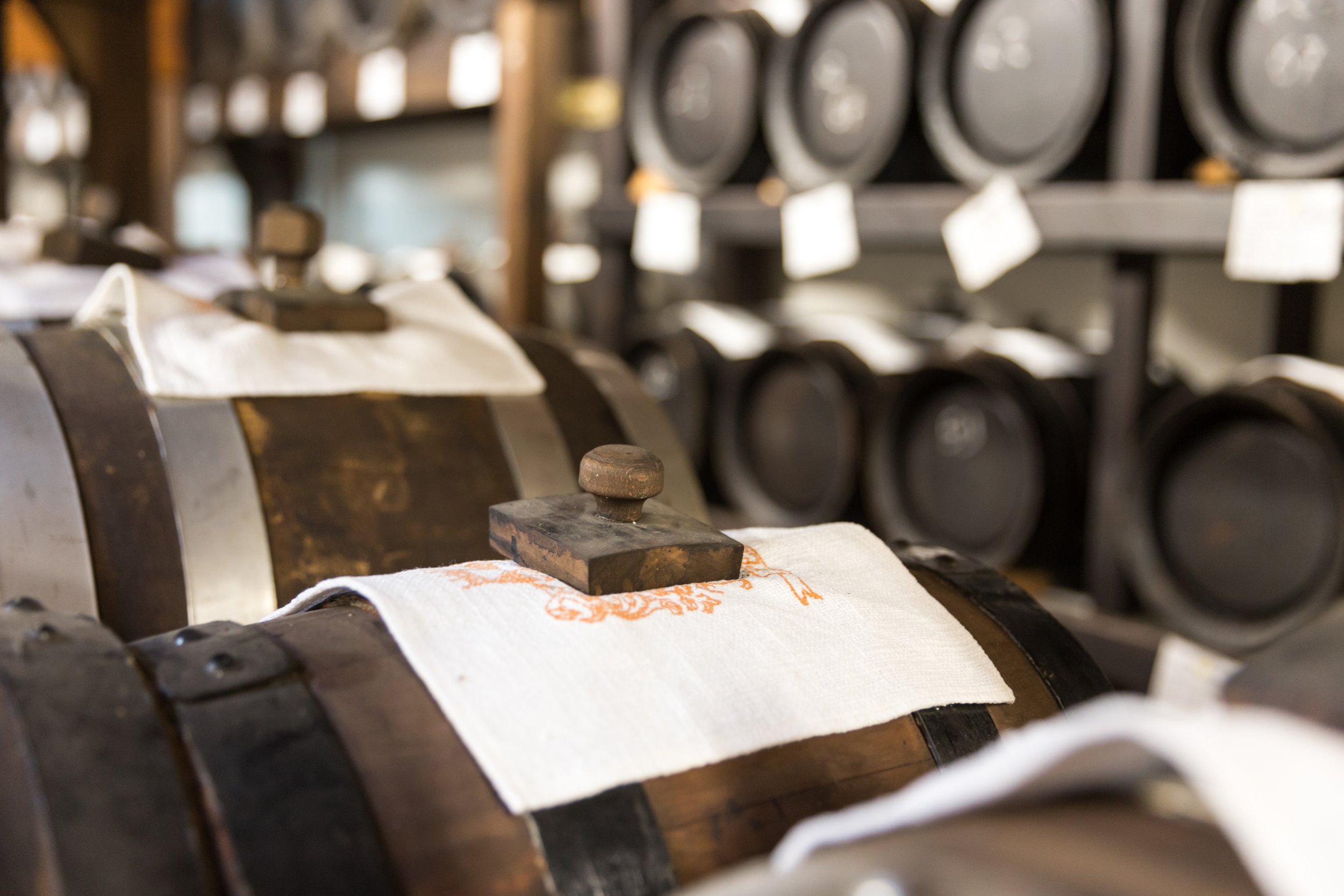Shopping For Balsamic Vinegar
Shopping for Balsamic vinegar’s can be complicated and with a price range of up to £150for a 100ml bottle it’s tough to know which ones to buy and what to use them for. So below is little bit of information and some tips to help you choose which ones to buy and how to use them.
The most expensive balsamic vinegar’s are the Traditional ones produced only in Modena and Reggio Emilia. They are made from grape must- whole pressed grapes- and then cooked over an open flame until it has reduced by roughly half. This is then left to ferment for three weeks followed by a minimum of 12 years of aging. The vinegar is fermented in barrels and as the vinegar ages it becomes thicker and more syrup like because of the evaporation process that takes place.
These barrels will vary in size and once a year the vinegar is bottled from the smallest cask in the sequence. Each barrel is then topped up with vinegar from the next cask up, with the largest cask getting filled with the new yield. None of the casks are ever completely drained meaning that it is very hard to tell exactly how old the balsamic vinegar is. This task is therefore left up to a tasting commission of five expert judges who convene to taste the vinegar’s and determine an appropriate grade and no age is printed on the label.
Traditional vinegar’s from Reggio Emilia have three different grades affinato (fine), with a red cap, which roughly corresponds to a 12-year vintage; vecchio (old), with a silver cap, which roughly corresponds to a 15-20 year vintage; or extra vecchio (extra old), with a gold cap, which roughly corresponds to a 20-25 year vintage. In Modena there’s just affinato, with a white cap, or extra vecchio, with a gold cap. These vinegars are always labelled with D.O.P. (“Denominazione di Origine Protetta”) stamp — a European Union certification that guarantees an ingredient’s quality, production, and place of origin.
Traditional vinegar’s are not made for cooking with as heating them will destroy their complex flavour. Instead they are best used for drizzling over cooked foods or eaten with a piece of Parmesan where the flavours can shine.
The next grade down of Balsamic vinegar’s is Condimento Vinegars. These are vinegars that have been made in a traditional manner but cannot get the traditional or D.O.P. title as they don’t meet standards of maturity or weren’t produced under the correct supervision. They are however often great products that were made outside of Modena or Reggio Emilia or from traditional producers however only aged for 3 to 7 years.
Condimento Balsamic vinegars tend to be much cheaper, however, can be of great quality making them much better value for money. You have to be careful when you buy “condimento” vinegars as the term is not protected and therefore can be found on lower grade vinegar. A good way to identify the better quality ones is to look at the ingredient list. If the vinegar is made only from grape must it is a very good sign. Some condimentos might contain a little wine vinegar to balance the acidity but if wine vinegar is the main ingredient it means that this is a generic vinegar sweetened with balsamic vinegar and therefore not of good quality. They should also carry the IGP stamp “indicazione geografica protetta,” or protected geographical indication.
The next grade down of vinegar is Balsamic vinegar of Modena and this refers to the vinegar commonly found in supermarkets and used for salads.
As demand for Balsamic vinegar grew there was a rise in derivative products which is what led to the D.O.P stamp. It was a way of protecting the true Traditional Balsamic vinegar producers. It doesn’t however offer any level of distinction among mass market balsamic vinegar’s which is where the IGP stamp comes in. It was introduced in 2009 by the European Union and guarantees that the product is made from grape varietals typical of Modena (Albana, Ancellotta, Fortana. Lambrusco, Montuni, Sangiovese, and Trebbiano), though the grapes can be grown anywhere and only have to be processed in Modena. This was the only way to meet the rising demand for balsamic vinegar.
Balsamic vinegar of Modena is cooked in pressurized vats and aged for a minimum of two months. I.G.P. vinegar’s all contain wine vinegar to bring the acidity level to 6% and can contain up to 50% wine vinegar. You need to be careful when buying these vinegars because often they contain thickening agents, caramel and other colourants to make them look more like traditional vinegar.
You also need to be aware of Imitation Balsamic Vinegars which are often in supermarkets pretending to be I.G.P Balsamic of Modena. Unlike I.G.P. vinegar these do not contain wine vinegar and cooked must, but instead are just vinegar with added sweetener and colouring and are industrially produced to make it look like I.G.P. Balsamic vinegar. Some of them will claim to be made in Italy but without the I.G.P stamp they could come from anywhere. Again a clue is always to look at the ingredient list; The higher the percentage of grape must the better the quality of the product.
Another common product is balsamic glaze. It’s a thick syrup made with grape must, I.G.P balsamic vinegar, guar gum and xantham gum and is essentially a way of making cheap balsamic the consistency of expensive balsamic. It is used in a similar way to the Traditional ones- as a drizzle or finishing sauce.
We have a great producer of Balsamic Vinegar in Modena called Acetaia Malpighi that we use. It is a family run business and they have specialised in Balsamic Vinegar since the 1850’s. They produce a wide range of Traditional vinegar’s including flavoured ones. Check out their website for more information. http://www.acetaiamalpighi.it/en/about-us


